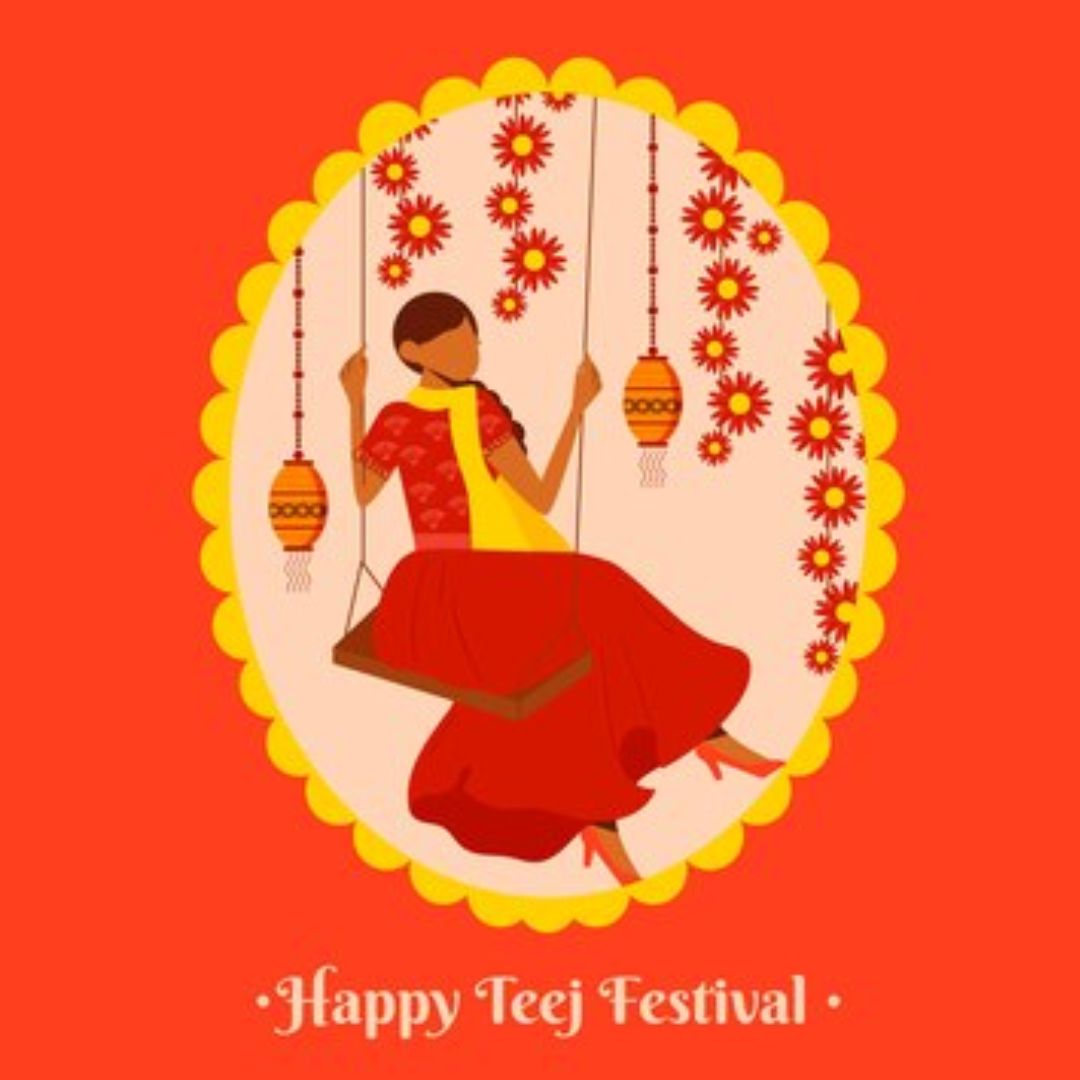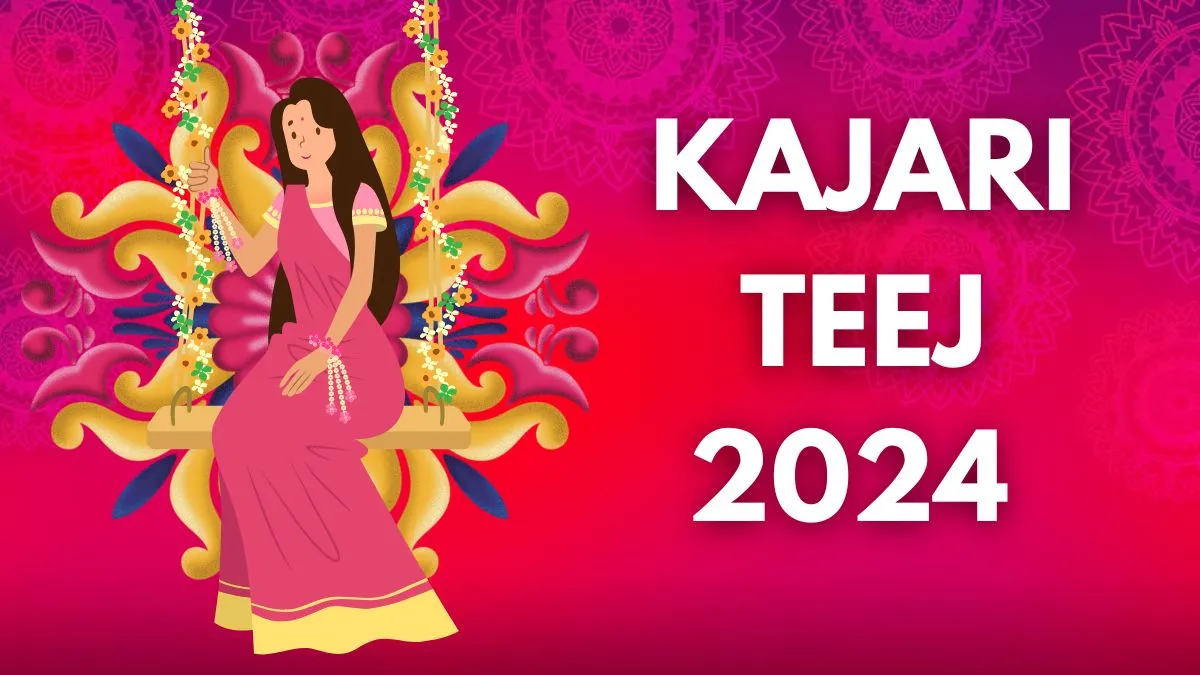- By Kashish Rai
- Thu, 22 Aug 2024 10:38 AM (IST)
- Source:JND
Kajari Teej 2024 Date: Kajari Teej is a paramount Hindu festival, observed on the third day of the waning moon in Bhadrapada (North India) or Shravana (South India). Typically, it falls three days after Raksha Bandhan and five days before Krishna Janmashtami. Also referred to as Badi Teej, Kajali Teej, or Satudi Teej in certain regions, this festival commands deep reverence. Characterised by traditional rituals and ardent observance, Kajari Teej's significance is universally recognised across the Hindu calendar. Despite regional variations, its importance remains steadfast, exemplifying the rich diversity and unity of Hindu traditions, making it a jubilant celebration for all.This year, Kajari Teej is being observed on 22nd August 2024.
Kajari Teej 2024: Date And Time
- Kajari Teej 2024 Date: 22nd August 2024
- Tritiya Tithi Begins: 05:07 PM, 21st August 2024
- Tritiya Tithi Ends: 01:45, 22nd August 2024
Kajari Teej 2024: Shubh Muhurat On Kajali Teej
Check out the auspicious timings on the day of Kajari Teej below:
- Sarvartha Siddhi Yog: 10:05 PM to 05:55 AM, 23rd August 2024
- Abhijit Muhurat: 11:58 AM to 12:50 PM
- Amrit Kaal: 05:47 PM to 07:13 PM
Additionally, avoid performing Puja during Bhadra Kaal from 05:54 AM to 01:46 PM.

Kajari Teej is celebrated on the 3rd day of the waning moon phase in the month of Bhadrapada, according to the North Indian calendar. (Image Source: Freepik)
Kajari Teej 2024: Significance Of This Sacred Festival
The name Kajari originates from ancient folklore, symbolising the longing for a husband's presence during a temporary separation. Intricately linked with the monsoon season, this festival is marked by fervent devotion. Women observe a fast and participate in various rituals, including the Rudra Abhishek Puja, to seek the blessings of Goddess Parvati and Lord Shiva. Married women pray to the divine couple, embodying a harmonious marriage, for a fulfilling marital life. They adorn themselves in elegant attire, apply mehndi, and initiate the celebrations. In some rural areas, elderly women also pay homage to the neem tree and the moon. Unmarried girls also fast, aspiring for a compassionate husband of their choice. Kajari Teej's enthusiasm is characterised by vibrant songs, dances, collective prayers, and a plethora of events, showcasing its significance.
Kajari Teej 2024: Rituals Associated With This Sacred Day
On Kajari Teej, women pay homage to Goddess Parvati, seeking her blessings for a harmonious married life. Women commence the day by rising early, completing their morning tasks, and then adorning themselves in new attire, sindur, bindi, bangles, and mehendi, emulating the appearance of newlywed brides. In certain regions, women congregate to worship the sacred neem tree under the guidance of a knowledgeable priest, performing a puja with offerings of kumkum, chawal, haldi, henna, fruits, and sweets. A stringent fast, known as Kajari Teej Vrat, is observed by women on this day, commencing before sunrise with a meal, followed by a day of abstinence from food and water.
ALSO READ: Bhadrapada Month 2024: Start And End Date; Know Significance Of The Second Month Of Chaturmas Period
In the evening, women gather for the puja, and the priest recites the Kajari Teej Katha. Some communities permit women to break their fast by consuming sattu or fruits after worshipping the moon. Married women observe the sacred Teej vrat for their husbands' longevity, while unmarried girls fast to find their ideal partner. Once initiated, the Kajari Teej vrat is typically observed for a lifetime or 16 years. This festival is a celebration of female camaraderie, with women indulging in delightful activities like dancing, singing, and swinging on tree-hung swings. The Kajli Songs are an integral part of the Badi Teej festivities, often accompanied by musical performances in rural areas.

